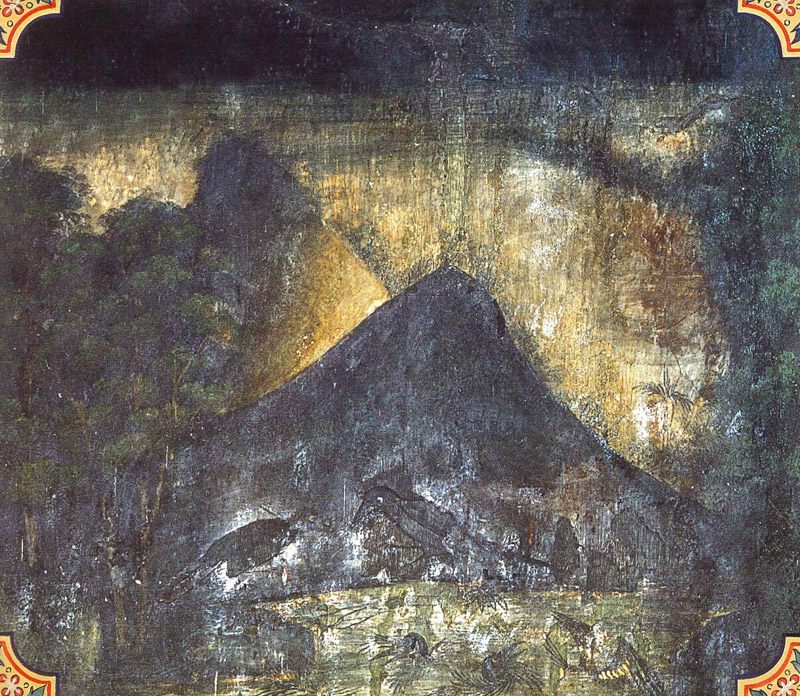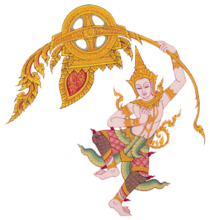
The Bodhisatta was once a crow. He lived in the forest alongside a pond. When famine arose, men living in the city could not spare any food to feed crows or make offerings to goblins and snakes. As a result, many crows left the city and went to live in the forest. One day a pair of city crows took up residence at the Bodhisatta’s pond and saw him catch a fish. Deeply impressed, one of the crows told the Bodhisatta he wanted to be his servant and the Bodhisatta agreed. From then on, when he caught a fish, the Bodhisatta ate only what he needed and gave the rest to his servant, who ate only what he needed and gave the rest to his wife.
Eventually the servant figured that if the Bodhisatta could fish, then he could too since they were both crows with the same eyes, beaks, and feet. The Bodhisatta warned him that they were not of the same tribe, and if he tried it, he would die. But the servant did not listen, and he walked into the pond where he got entangled in weeds and drowned.
In the Lifetime of the Buddha
The servant crow was an earlier birth of Devadatta, a disciple of the Buddha who became his nemesis. He left the Buddha’s sangha with many disciples to set up his own order and declared that he too was a Buddha. The real Buddha sent two of his top disciples, Sariputta and Moggallana, to preach to those wayward disciples; and while Devadatta was asleep, most of them returned to the Buddha’s fold. This so angered Kokalika, a disciple of the Buddha who became one of Devadatta’s most devoted followers, that he kicked Devadatta in the chest and caused him to spit up blood.
The Buddha told this story to let his disciples know this was not the first time Devadatta had imitated him and suffered for it.
